What are the techniques for printing logos on flatware?
You want your restaurant's logo on your flatware, but you're afraid it will look cheap or just wash off. A faded logo is worse than no logo at all.
The best techniques physically alter the steel itself. Laser engraving offers clean, permanent precision for any design. Stamping creates a deep, durable impression ideal for very high volumes. These methods ensure the logo lasts a lifetime and is completely dishwasher safe.
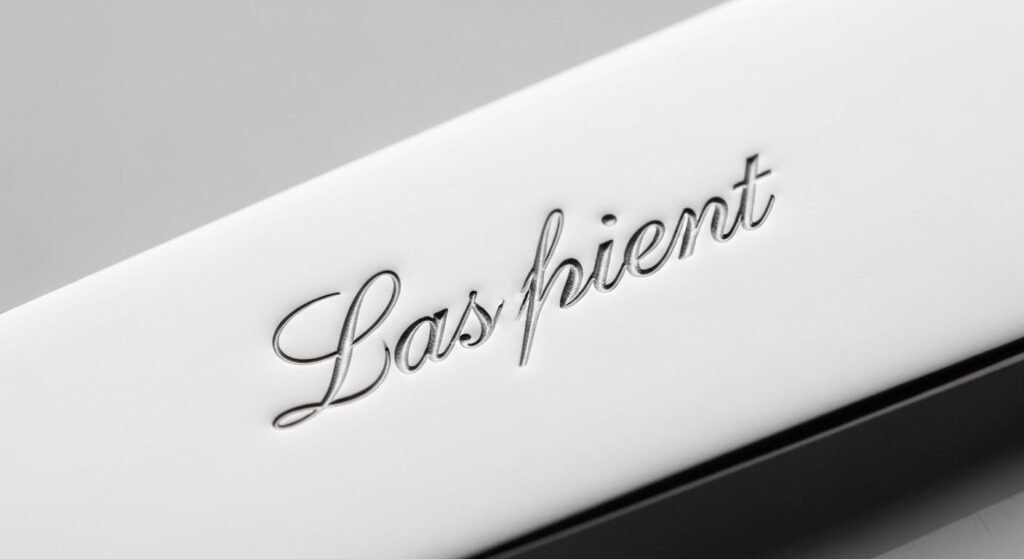
Putting a logo on flatware is a mark of pride for a brand. I've worked with countless clients, from boutique hotels to large chains, on this very topic. The method we choose depends entirely on their brand image, order volume, and budget. For a professional buyer like Jacky, the logo must be perfect and permanent; it has to withstand thousands of wash cycles without fading. Any method that just puts ink on the surface is a non-starter. A logo should be a permanent mark of quality, not a temporary sticker.
What is the production process of customized Logo cutlery?
You have a perfect logo, but getting it onto a fork seems like a mysterious and complex process. You worry about making a costly mistake or getting a result that doesn’t look right.
The process is simple: finalize your digital logo, select a method like laser engraving or stamping, approve a physical sample, and then proceed with mass production. This step-by-step approach ensures your vision is perfectly executed on every single piece.
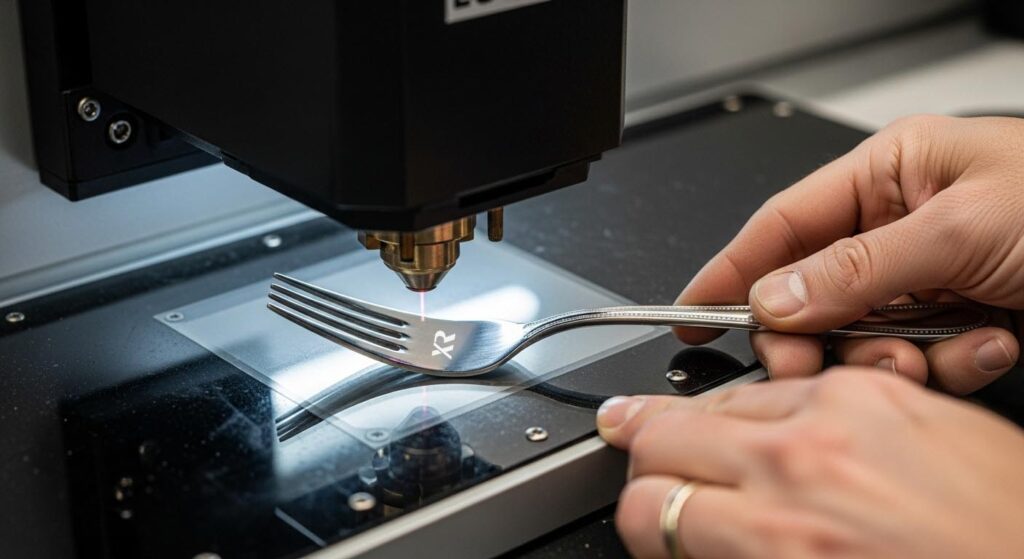
I guide my clients through a straightforward process to eliminate any guesswork. It's built on clear communication and approval at every critical stage. Here’s how it works:
- Step 1: Design Finalization. You provide us with a high-resolution digital file of your logo, usually in a vector format like .AI or .EPS. Our team then works with you to determine the ideal size and placement on the flatware piece.
- Step 2: Method Selection. Based on your logo's complexity, your order volume, and your budget, we choose the best technique. For a detailed logo or a smaller batch, we'll choose laser engraving. For a simple logo on 100,000 pieces, stamping might be more cost-effective.
- Step 3: Sampling & Approval. This is the most important step. We produce a physical sample of the finished product with your logo on it. We send this to you for inspection. You get to see it, touch it, and approve it before we make a single piece for the main order.
- Step 4: Mass Production. Once you give the final approval on the sample, we begin the full production run, confident that the result will meet your exact specifications.
Which is the best way to print a logo on flatware?
You see options like laser, stamping, and etching. They all sound technical, and you don't know which is the smart choice. You're worried about picking one that looks bad or won't last.
For precision, flexibility, and a premium finish on any quantity, laser engraving is the best modern method. For extremely high-volume, simple logos where per-piece cost is the top priority, stamping is a highly durable and economical alternative.
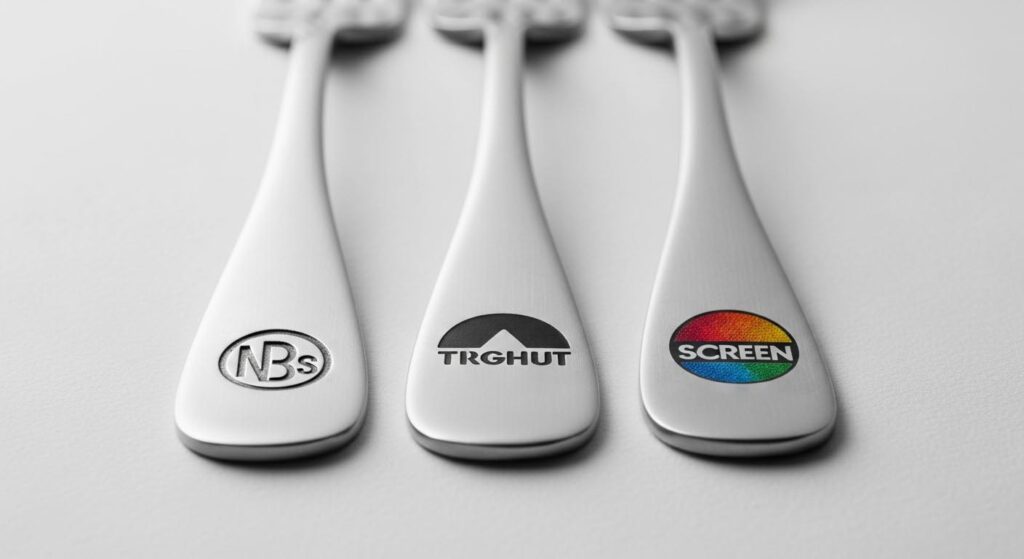
When a client asks for my recommendation, it always comes down to their specific needs. I tell them there are three main professional methods, and I almost always steer them toward the top two.
| Method | Best For | Durability | Precision | Initial Cost |
|---|---|---|---|---|
| Laser Engraving1 | Any design, any quantity | Permanent | Extremely High | Low to None |
| Stamping2 | Simple logos, huge volume | Permanent | Good | High (for the die) |
| Acid Etching3 | Traditional look | Very Durable | Moderate | Moderate |
For most brands today, laser engraving is the champion. It uses a high-powered laser to etch the logo with incredible detail. It's perfect for complex designs and has no setup cost, making it ideal for small and large orders alike.
Stamping is the industrial workhorse. We create a hardened steel die (a mold) of the logo and use immense pressure to press it into the flatware. The logo is deep and indestructible. It's great for national chains ordering massive quantities, as the initial high cost of the die is spread out over many thousands of pieces.
Acid etching is a more traditional method that uses acid to corrode a pattern onto the steel. It gives a softer look but lacks the sharp precision of a laser. Some brands like it for a classic, artistic feel.
How to Ensure Your Logo Stays Intact After Repeated Dishwashing?
Your new branded flatware looks amazing. But you have a nagging fear that the first few runs through a commercial dishwasher will make your beautiful logo fade, chip, or vanish completely.
To guarantee a dishwasher-proof logo, you MUST choose a method that physically alters the steel. Laser engraving and stamping are the only two methods that create a permanent mark which cannot be worn away by heat, detergents, or water pressure.
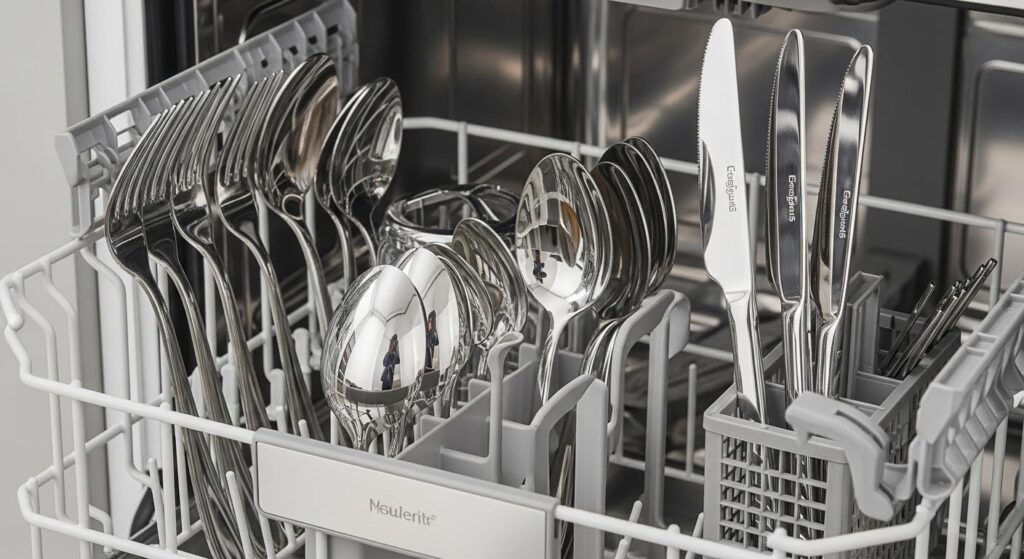
The secret to durability is simple: the logo must become part of the steel itself. A commercial dishwasher is an incredibly harsh environment. It combines very high heat (up to 180°F / 82°C), powerful water jets, and corrosive detergents. Any logo that is merely a layer of ink or paint on the surface stands no chance.
This is why I strongly advise all my clients against methods like silk screen printing or heat transfer for flatware. These methods are essentially applying a specialized paint. It might look good initially, but it will inevitably be destroyed.
Laser engraving and stamping, on the other hand, are indestructible.
- Laser engraving works by vaporizing a micro-layer of the steel, creating a permanent mark.
- Stamping works by using force to physically reshape the steel, pressing the logo into the surface.
In both cases, there's nothing to peel off, chip, or fade. The logo is a physical feature of the utensil. It will survive thousands of wash cycles and will last as long as the fork or spoon itself. This is the standard for quality and safety.
How durable is a laser-engraved logo on stainless steel?
Laser engraving sounds like the perfect solution. It’s precise and flexible. But you're still skeptical. How can you be sure this high-tech method is tough enough for the real world?
A laser-engraved logo is completely permanent. The mark is physically etched into the steel, not printed on top. It will not fade, rub off, or be damaged by washing. The logo is as durable as the stainless steel flatware itself.
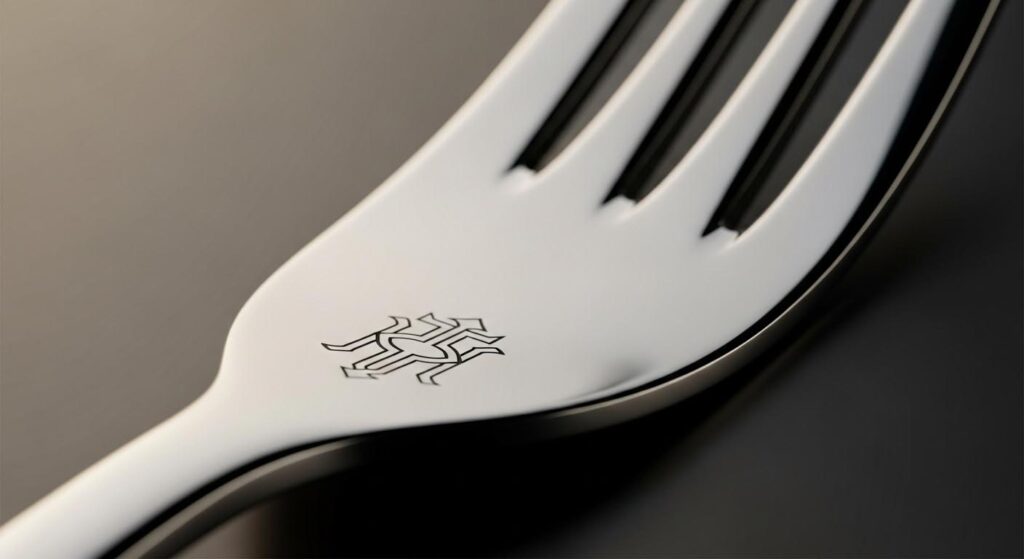
Think of a laser-engraved logo not as a print, but as a tiny, precise carving. The process uses a concentrated beam of light to generate intense heat, which vaporizes a very thin layer of the stainless steel surface. This creates a small indentation with a dark, high-contrast finish that is crisp and clean. Because the logo is now physically part of the utensil, its durability is no longer a question. It has the exact same properties as the rest of the steel. It has the same incredible resistance to heat, chemicals, and physical abrasion. You can scrub it with a scourer, run it through the most powerful dishwasher, and use it three times a day for years—the logo will remain unchanged. It will last the entire lifetime of the flatware. This combination of perfect precision and absolute permanence is why laser engraving has become the true standard of excellence for branding on high-quality flatware.
Conclusion
For a permanent logo that reflects quality, choose laser engraving for precision and flexibility. For massive, simple orders, stamping offers incredible durability. These physical methods ensure your brand's mark lasts forever.
-
Explore the advantages of laser engraving, including its precision and versatility for various designs. ↩
-
Explore this link to understand the benefits of stamping, including cost-effectiveness and efficiency in high-volume production. ↩
-
Learn about acid etching's unique qualities and how it stands out among engraving techniques. ↩
